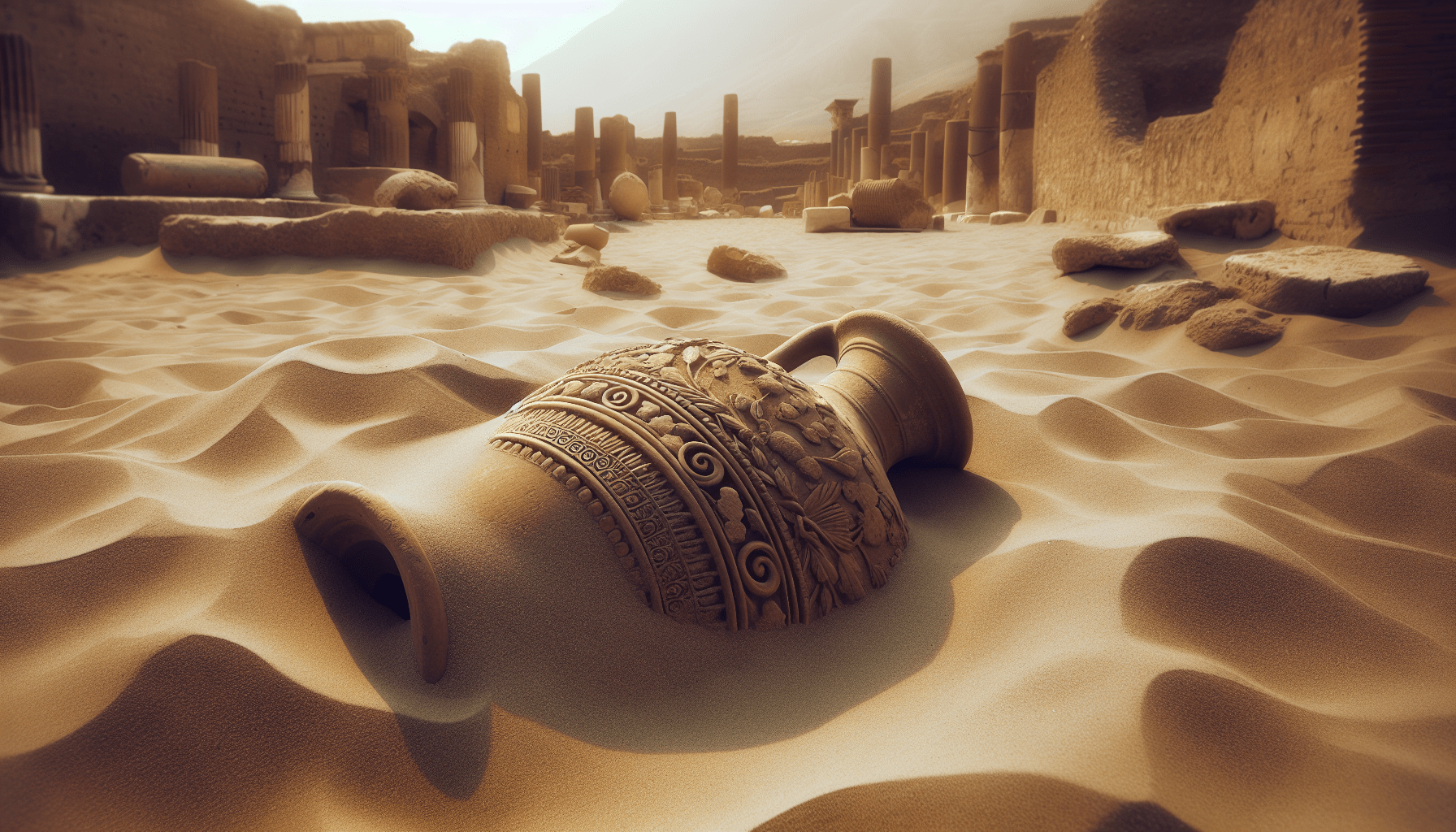BAGAIL 8 Set Packing Cubes Luggage Organizer Bags for Travel Accessories-Cream
$17.99 (as of April 23, 2025 06:52 GMT +00:00 - More info)You’re about to embark on an incredible journey to the past at the Herculaneum Archaeological Park, where the vibrant life of ancient Romans is resurrected for today’s curious souls. In 79 A.D., Mount Vesuvius erupted with ferocious intensity, burying towns like Pompeii and Herculaneum under a shroud of volcanic material. Though discovered in 1707, Herculaneum was a challenge to excavate, leaving its secrets locked beneath hardened layers of earth for centuries. Now, visitors can marvel at well-preserved ruins and immerse themselves in history by experiencing the newly restored ancient beach. Designed to transport you back to the days before the fateful eruption, this project has turned back the clock, providing a living snapshot of Roman life. Easily accessible via Naples International Airport, the park offers a truly unique experience that bridges the gap between past and present like never before. Have you ever wondered what it would be like to step back in time and stroll along an ancient Roman beach? Imagine the sun-kissed sand under your feet and the distant roar of Mount Vesuvius as your backdrop. Well, now you can experience this historical marvel at the Herculaneum Archaeological Park, which recently unveiled its restored ancient beach.

Shop These Accessories for a Comfortable Trip
Discovering Herculaneum: A Peek Into Ancient History
Herculaneum, a neighboring town of the more famous Pompeii, was one of the many victims of Mount Vesuvius’ catastrophic eruption in 79 A.D. Unlike Pompeii, which was buried under volcanic ash, Herculaneum was entombed in a sea of pyroclastic material—an avalanche of hot gas and volcanic matter—that preserved its ruins incredibly well.
Unearthing Herculaneum: The Challenges and Triumphs
The city was first discovered in 1707, but excavating it proved to be a Herculean task—pun intended. The hardened pyroclastic material made digging laborious and time-consuming. Over the centuries, archaeologists have painstakingly uncovered and restored significant portions of this ancient Roman town.
Key Timeline:
| Year | Milestone |
|---|---|
| 1707 | Discovery of Herculaneum |
| 18th Century | Initial excavation efforts |
| 20th Century | Advanced excavation techniques introduced |
| Present | Restored ancient beach unveiled |
The preservation of Herculaneum provides an unparalleled window into ancient Roman life, capturing both the grandeur and the intricacies of daily existence.
The Eruption of Mount Vesuvius: A Catastrophic Event
Mount Vesuvius erupted with little warning, releasing pyroclastic flows that instantly engulfed and buried Herculaneum and its inhabitants. This tragic event, however, resulted in the exceptional preservation of everything from wooden structures to papyrus scrolls.
The Science Behind the Preservation
The unique preservation is attributed to the rapid hardening of volcanic material. While Pompeii was covered in ash and pumice, Herculaneum faced an onslaught of pyroclastic flows. This material solidified almost instantaneously, creating a protective shell around buildings, artifacts, and even organic material.
Comparative Preservation:
| Factor | Pompeii | Herculaneum |
|---|---|---|
| Material | Ash and pumice | Pyroclastic flows |
| Speed of Burial | Gradual | Instantaneous |
| Condition of Ruins | Varied | Exceptional |

Shop These Accessories for a Comfortable Trip
Exploring the Herculaneum Archaeological Park
Today, the Herculaneum Archaeological Park offers visitors an immersive experience like no other. Whether you’re a history enthusiast, an archaeologist, or just a curious traveler, there’s something for everyone.
A Journey Through Well-Preserved Ruins
Walking through Herculaneum is akin to stepping into a time machine. The ruins here are remarkably well-preserved. From grand villas to humble shops, the site paints a vivid picture of a bustling Roman town right before its untimely end.
Key Points of Interest:
- The House of the Deer: A luxurious villa adorned with intricate mosaics.
- The House of the Mosaic Atrium: Known for its exquisite floor mosaics.
- The Suburban Baths: Among the best-preserved public baths from the ancient world.
Museums and Exhibitions
The on-site museums and exhibitions showcase the plethora of artifacts uncovered during excavations. You’ll find remarkably preserved wooden furniture, household items, and even food remnants that offer a unique glimpse into the daily lives of Herculaneum’s residents.
Must-See Exhibits:
- Furniture Exhibit: Featuring ancient wooden beds, chairs, and tables.
- Artifacts: Household items like pottery, utensils, and even ancient scrolls.
- Food Remnants: Revealing the diet and culinary habits of ancient Romans.
Unveiling the Restored Ancient Beach
One of the most recent and exciting additions to the Herculaneum Archaeological Park is the restored ancient beach. This labor of love aimed to recreate the pre-eruption state of Herculaneum’s shoreline, offering visitors a tangible connection to the past.
The Restoration Project: Journey to the Past
Restoring the ancient beach was no small feat. The project involved extensive research, meticulous planning, and expert execution to bring the vision to life. The goal was not just to restore a physical space but to recreate the atmosphere of a Roman beach.
Steps in the Restoration Process:
- Historical Research: Studying ancient texts, maps, and previous findings.
- Excavation: Carefully unearthing the beach area.
- Restoration: Using materials and techniques true to the period.
- Landscaping: Recreating the natural environment as accurately as possible.
Experiencing Roman Life by the Beach
The restored beach offers an unparalleled opportunity to experience life as it was before that fateful day in 79 A.D. Imagine relaxing on the same sand where Roman citizens once lounged, feeling the Mediterranean breeze, and hearing the gentle waves—exactly as they did nearly two millennia ago.
Planning Your Visit to Herculaneum
You’re probably wondering, “How can I get there?” No problem! Reaching Herculaneum is fairly straightforward, especially with modern transportation options.
Getting to Herculaneum
Visitors typically fly into Naples International Airport, the nearest major airport. From there, you can choose from several modes of transport to reach Herculaneum.
Transportation Options:
| Mode | Details |
|---|---|
| Car | A 20-minute drive from Naples |
| Bus | Regular services from Naples |
| Train | Take the Circumvesuviana line |
Best Time to Visit
The best time to visit Herculaneum is during the spring and fall when the weather is mild and the crowd levels are manageable. Summers can be hot and crowded, while winters might be too chilly for a long exploration.
Seasonal Breakdown:
| Season | Weather |
|---|---|
| Spring | Mild temperatures, fewer tourists |
| Summer | Hot, crowded during peak season |
| Fall | Pleasant weather, fewer crowds |
| Winter | Cold, but less crowded |
Tips for a Great Visit
To make the most of your trip, consider these handy tips:
- Wear Comfortable Shoes: The uneven terrain can be tricky.
- Bring Water: Staying hydrated is crucial, especially in the summer.
- Guided Tours: Opt for a guided tour for an enriched experience.
- Download a Map: Familiarize yourself with the layout beforehand.
A Unique, Immersive Experience
Herculaneum Archaeological Park isn’t just another historical site; it’s a journey through time. You get to explore excellently preserved ruins, immerse yourself in ancient history, and even relax on a recreated Roman beach. The sheer level of detail and the authenticity of the restorations promise an unforgettable experience.
A Tale of Two Cities: Herculaneum vs. Pompeii
You might wonder how Herculaneum compares to Pompeii, its more famous counterpart. While both cities offer unique insights into Roman life, they bring different elements to the table.
Comparison of Herculaneum and Pompeii:
| Aspect | Herculaneum | Pompeii |
|---|---|---|
| Preservation | Exceptionally preserved | Well-preserved |
| Material | Pyroclastic flows | Ash and pumice |
| Key Features | Wooden structures, beach | Amphitheaters, large forums |
| Crowds | Less crowded | More tourists |
You Are Here: Living History
The restored ancient beach at Herculaneum doesn’t just show you history; it lets you live it. Whether you’re digging your toes into the sand, exploring a Roman villa, or marveling at preserved artifacts, the experience is genuinely one-of-a-kind.
Conclusion: A Journey Worth Taking
From its well-preserved ruins and immersive museums to the newly unveiled ancient beach, Herculaneum Archaeological Park offers a journey like no other. So pack your bags, book that flight to Naples, and get ready to step back in time. You won’t just see history; you’ll experience it. And who knows, you might even leave with a new perspective on the intricate tapestry of human civilization.
Enjoy your time-traveling adventure to Herculaneum!
Shop These Accessories for a Comfortable Trip






